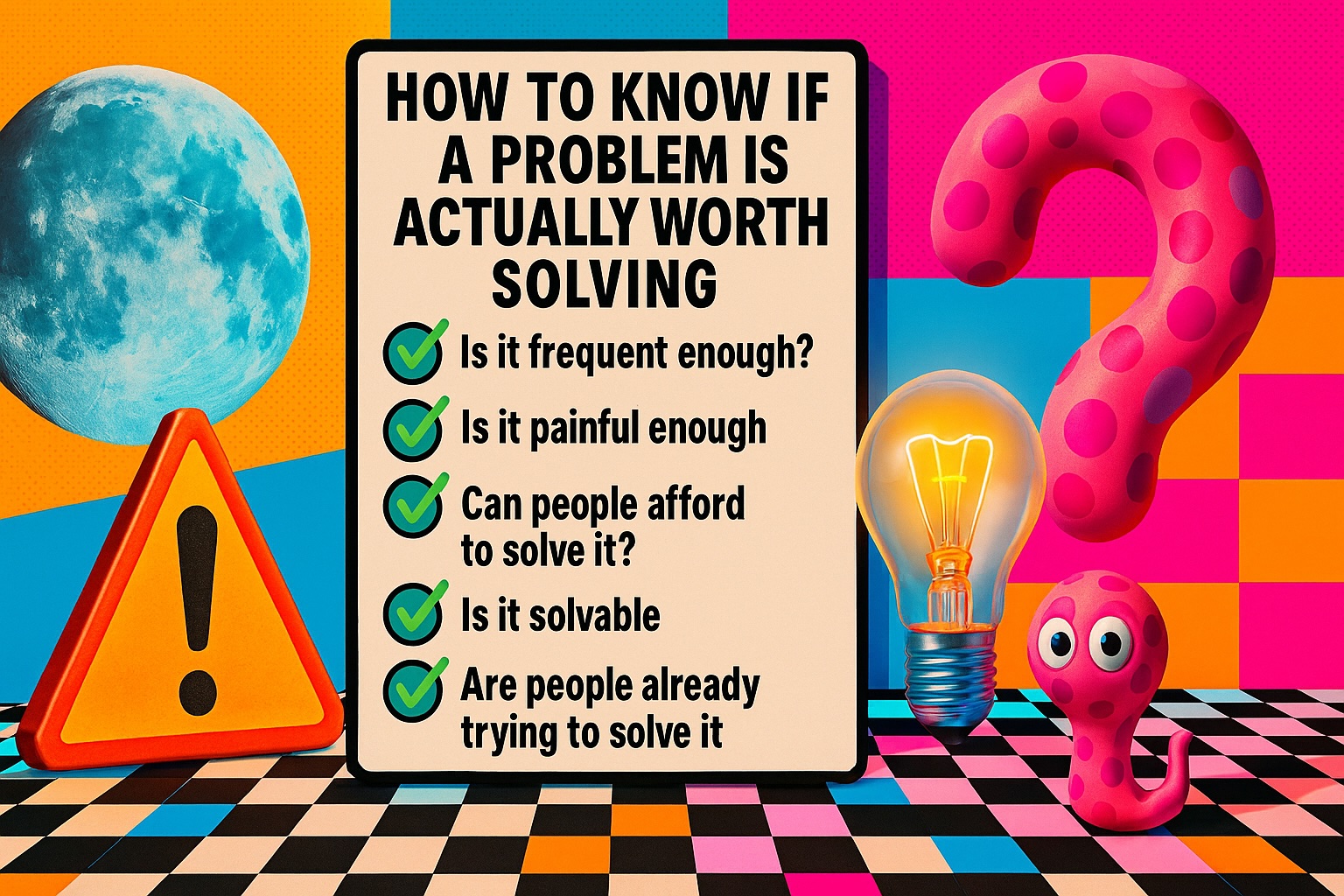What is 'Product-Market Fit' and Why is it Your #1 Goal?
Stop building products nobody wants - here's how to know if you've actually solved a real problem
What is 'Product-Market Fit' and Why is it Your #1 Goal?
The startup metric that separates winners from expensive hobbies
Right, let's cut through the startup jargon and talk about the one thing that separates successful businesses from expensive hobbies. After watching too many brilliant founders build amazing products that nobody actually wants, I'm going to break down product-market fit in a way that actually makes sense.
I've seen entrepreneurs get caught up in perfecting their product while completely ignoring whether anyone gives a damn about the problem they're solving. As Marc Andreessen said in his original PMF essay - "The only thing that matters is getting to product-market fit." Without it, you're just burning money on a very expensive learning experience.
But here's the thing - product-market fit isn't some mystical startup unicorn. It's actually quite simple to understand and measure once you know what to look for.
TL;DR: The PMF Essentials
- Product-market fit = solving a real problem people will pay for
- Signs: Word-of-mouth growth, high retention, customers become advocates
- Find it: Use Reddit to discover real pain points, validate before building
- Test it: Build small, measure behavior (not opinions), iterate fast
What is Product-Market Fit? The Simple Definition That Actually Makes Sense
Forget the fancy definitions. Product-market fit happens when you've built something that solves a real problem for real people who are willing to pay for it. That's it. No corporate buzzwords needed.
Think of it like this - you know you've got product-market fit when:
- People are practically ripping your product out of your hands
- You can't keep up with demand (good problem to have)
- Customers are telling their friends without you asking them to
- You're getting inbound inquiries faster than you can respond
It's not about having the most features, the prettiest design, or the cleverest marketing. It's about solving a problem that keeps people awake at night.
The Real Signs of Product-Market Fit: How to Know If You've Actually Got It
Here's where most founders get it wrong - they mistake early traction for true product-market fit. But there's a massive difference between someone saying "that's nice" and someone saying "shut up and take my money."
Unmistakable Signs You've Hit Product-Market Fit:
- Word-of-mouth growth - Your customers become your sales team
- High retention rates - People stick around because they can't imagine life without your solution
- Consistent revenue growth - Not just one-off sales, but predictable income
- Customers push back when you try to change things - They're emotionally invested
- You're struggling to keep up with demand - Scaling becomes your biggest challenge
Warning Signs You Haven't Hit PMF Yet:
- You're doing all the talking - Having to convince people they need your product
- High churn rates - People try it once and disappear
- Lukewarm feedback - "It's okay" is not product-market fit
- You're pivoting every few months - Constantly changing direction because nothing sticks
How to Find Product-Market Fit: The Reddit Strategy for Real User Pain Points
Now I'm going to share something most startup guides won't tell you - Reddit is a goldmine for finding real problems that people are desperately trying to solve. While everyone else is conducting formal market research, smart founders are lurking in subreddits where people complain about their daily frustrations.
The Reddit Pain Point Mining Method:
- Find relevant subreddits where your target audience hangs out
- Look for recurring complaints - What keeps coming up again and again?
- Pay attention to the language they use - How do they describe their problems?
- Notice what solutions they've already tried - What's not working for them?
- Identify the emotional weight - Which problems make people genuinely frustrated?
For example, if you're building a productivity app, don't just look at r/productivity. Check out r/ADHD, r/workingmoms, r/freelancers - anywhere people are struggling with focus and organization. The best business ideas come from real pain points, not imaginary problems. (Want more on finding winning ideas? Check out how I use Reddit to uncover customer pain points).
How to Turn User Problems Into Business Ideas That Actually Work
Feeling like a detective at this point, but here's the game-changer - the best startups don't create new problems, they solve existing ones better. Your job isn't to educate people about why they should care about your problem. Your job is to find problems people already know they have.
The Problem-to-Product Translation Process:
- Start with the pain, not the solution - What's actually keeping people up at night?
- Validate the problem before building anything - Talk to real humans, not just your friends
- Look for problems people are already paying to solve - Even badly
- Focus on frequency and intensity - How often does this problem occur and how much does it hurt?
Instead of: "I'll build an app that helps people be more organized"Try: "I'll solve the specific problem of parents losing track of their kids' school schedules"
How to Know If a Problem Is Actually Worth Solving

OK over to the validation part. Now I'm going to share the brutal truth - not every problem is worth solving from a business perspective. Some problems are real but not profitable. Some affect millions of people but nobody wants to pay to fix them.
The Problem Worth Solving Checklist:
- Is it frequent enough? - Does this problem happen regularly or just once in a blue moon?
- Is it painful enough? - Are people actively looking for solutions or just mildly annoyed?
- Can people afford to solve it? - Do they have the budget and willingness to pay?
- Is it solvable? - Can you actually build something that fixes this problem?
- Are people already trying to solve it? - Even with imperfect solutions?
Speed to validation is a BIG factor here too. The faster you can test whether people actually want what you're building, the less time and money you'll waste on ideas that sound good on paper but flop in reality. Research shows that 42% of startups fail because there's no market need - which is just a fancy way of saying they never found product-market fit.
The PMF Reality Check: Stop Building and Start Listening
Product-market fit isn't about building the perfect product. It's about building the right product for the right people at the right time. Everything else is just details.
If you're not seeing strong signals that people desperately want what you're building, don't double down on features. Go back to the problem. Talk to more people. Spend time in those Reddit threads. The market will tell you what it wants if you're willing to listen.
Most founders build what they think people want, not what people actually want. Don't be most founders. Start building something people are actually willing to pay for - your future self (and your bank account) will thank you for it. (Ready to dive deeper into customer research? Here's my complete guide to understanding what customers really want).






